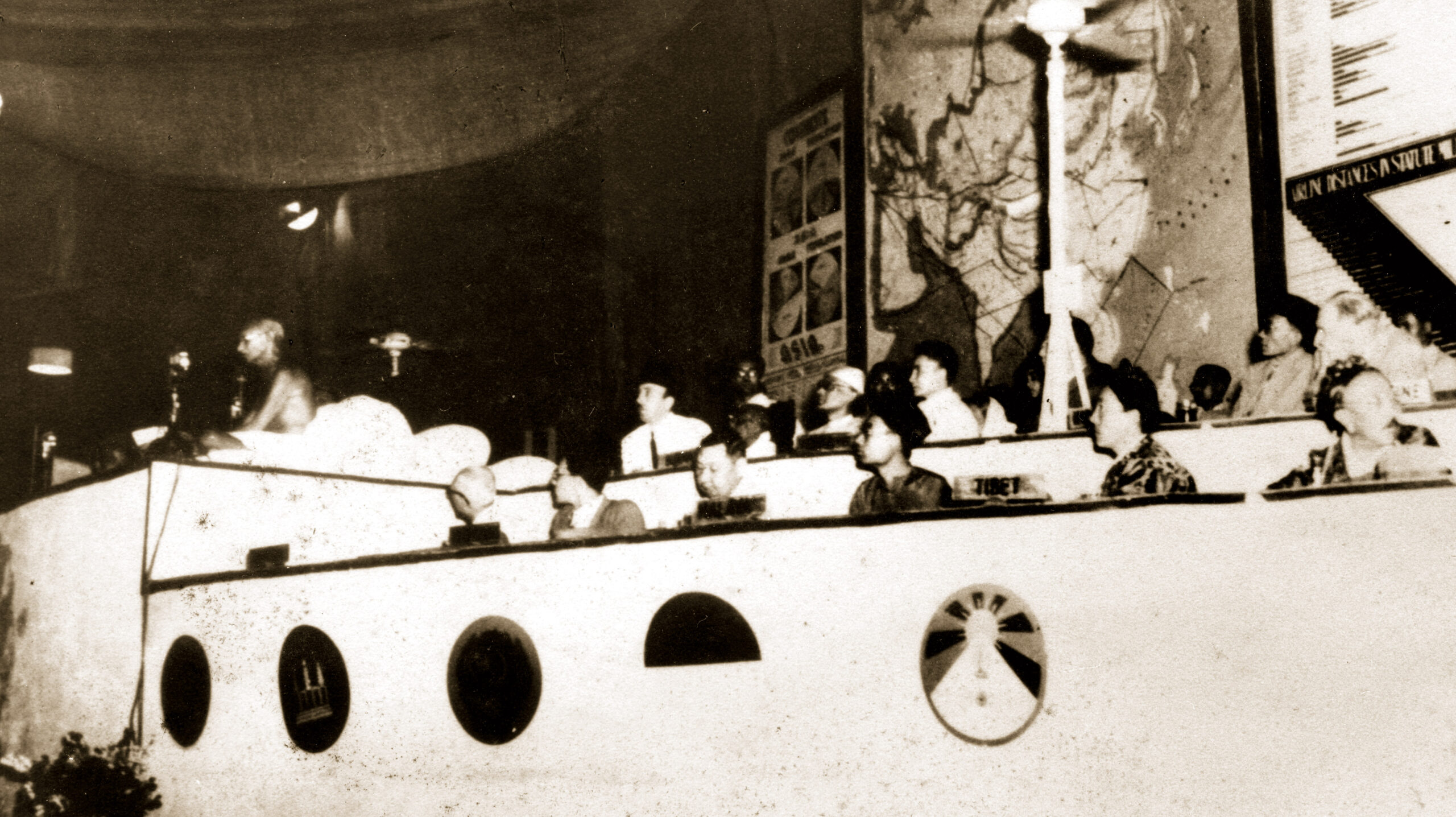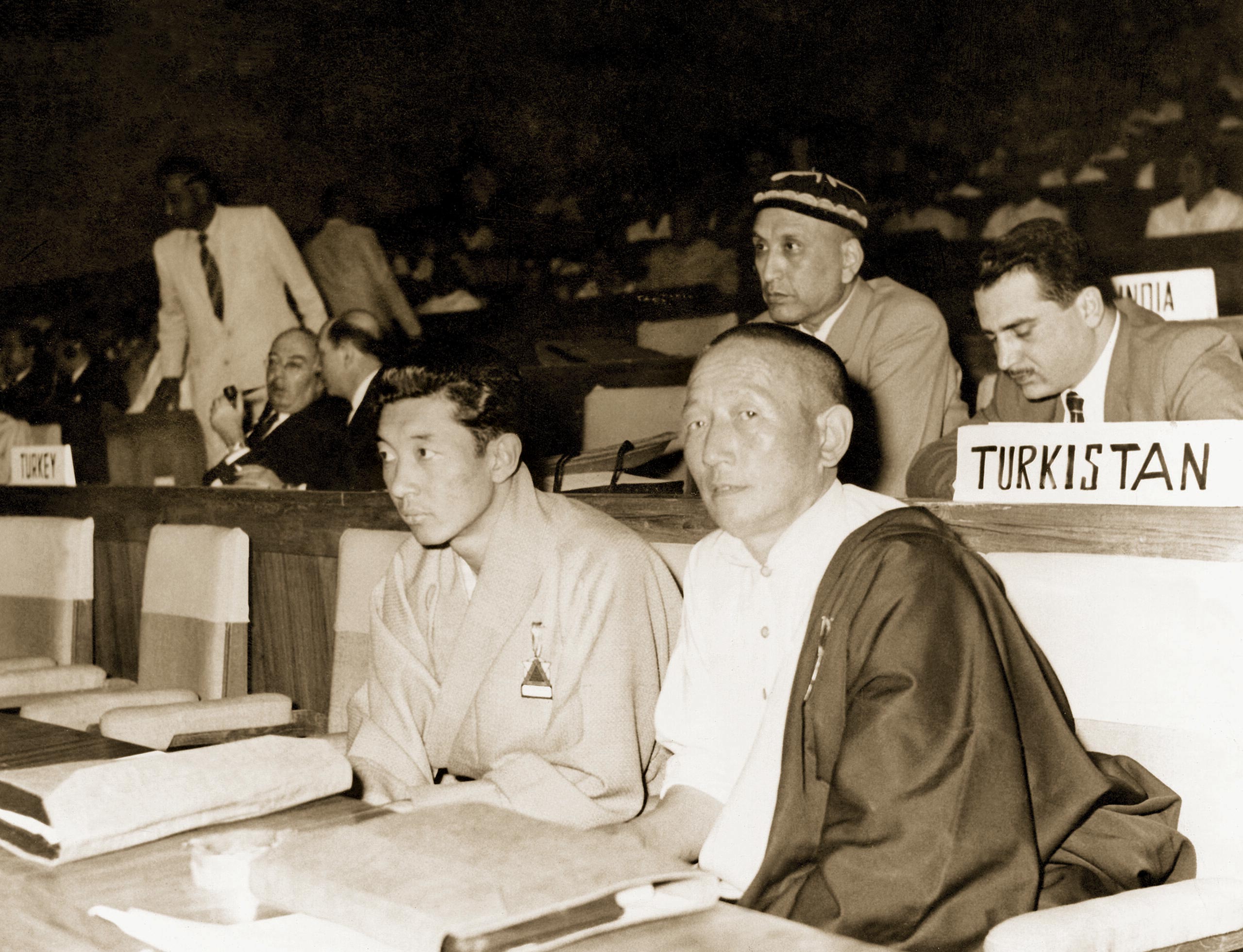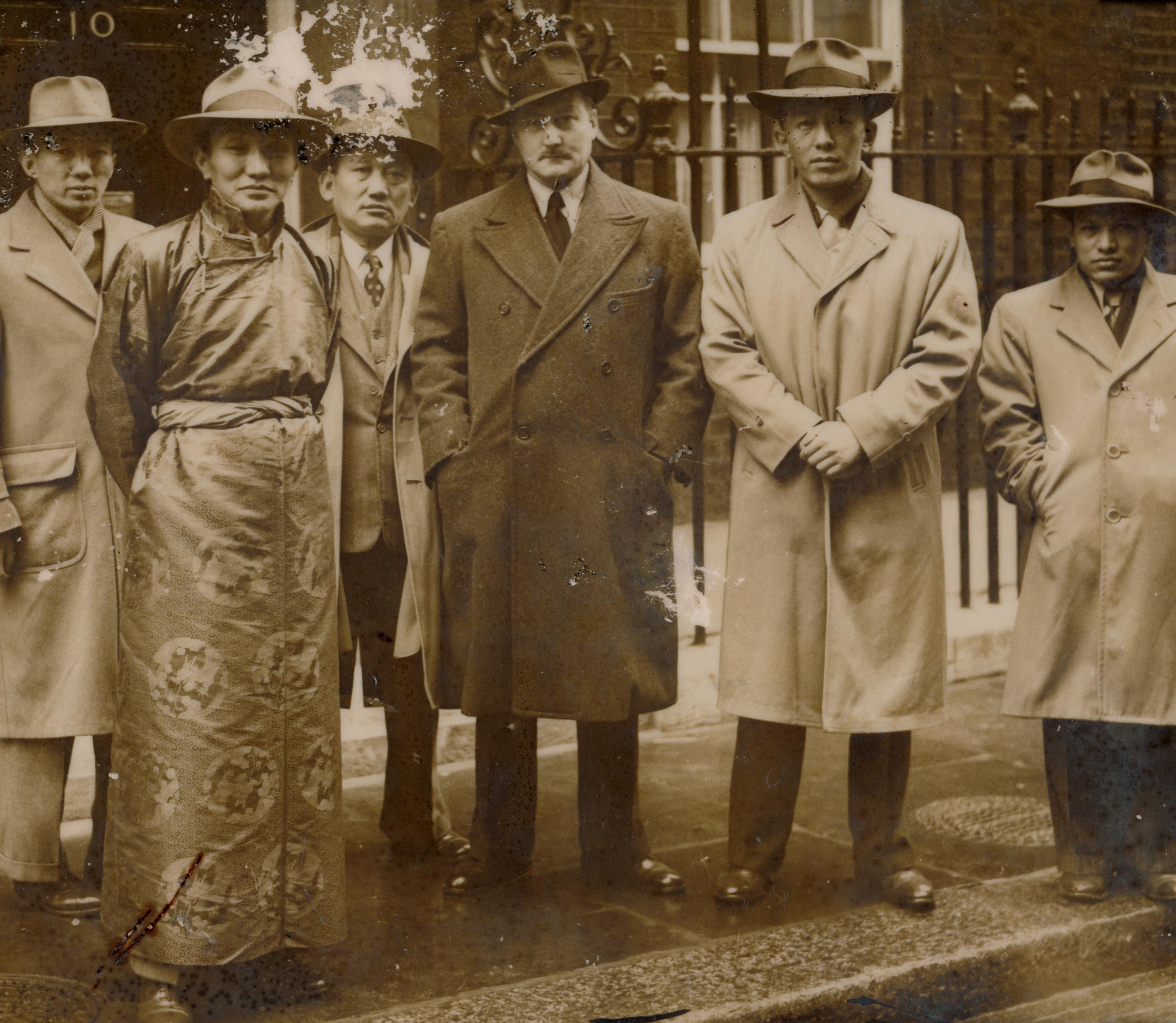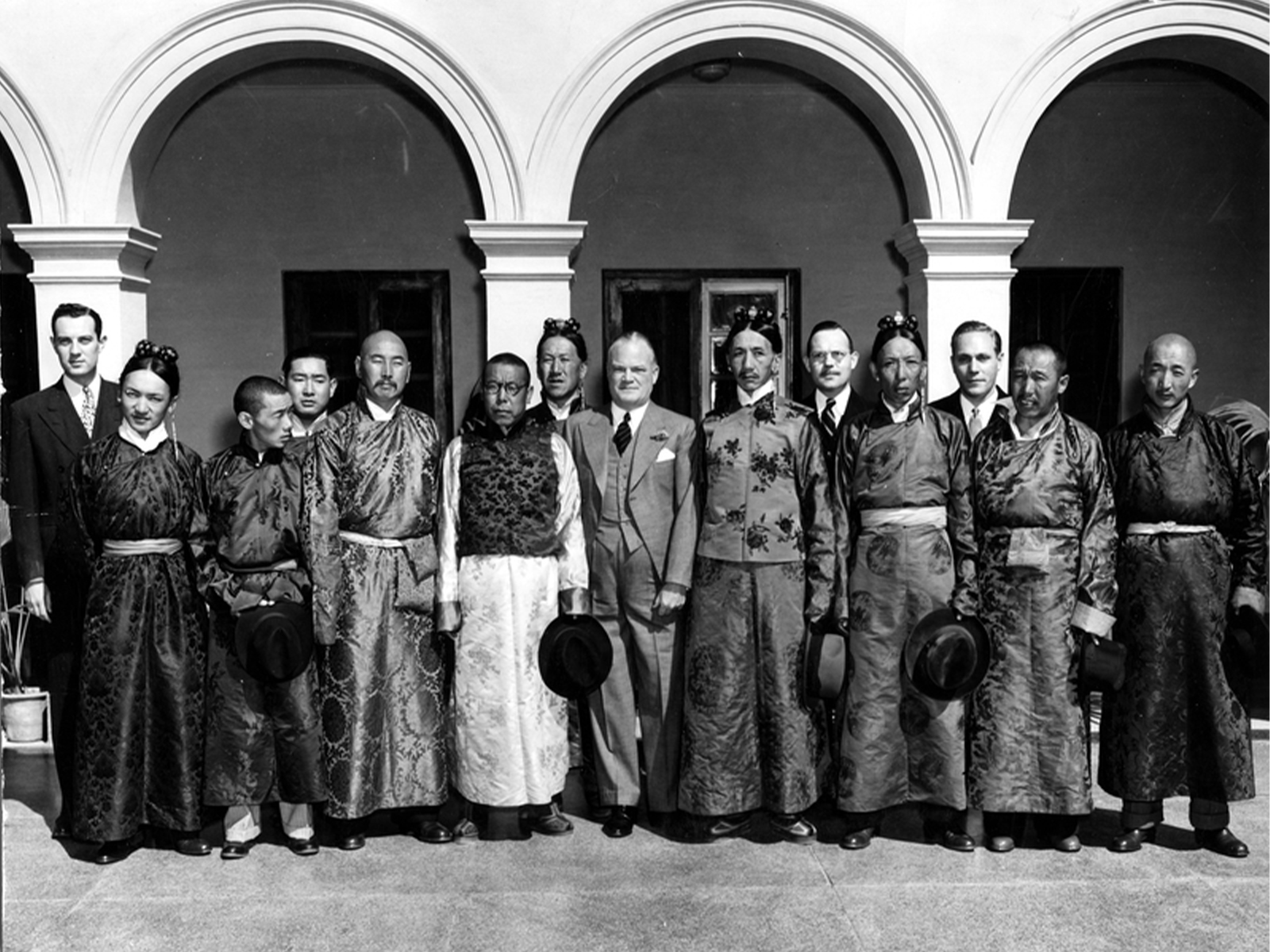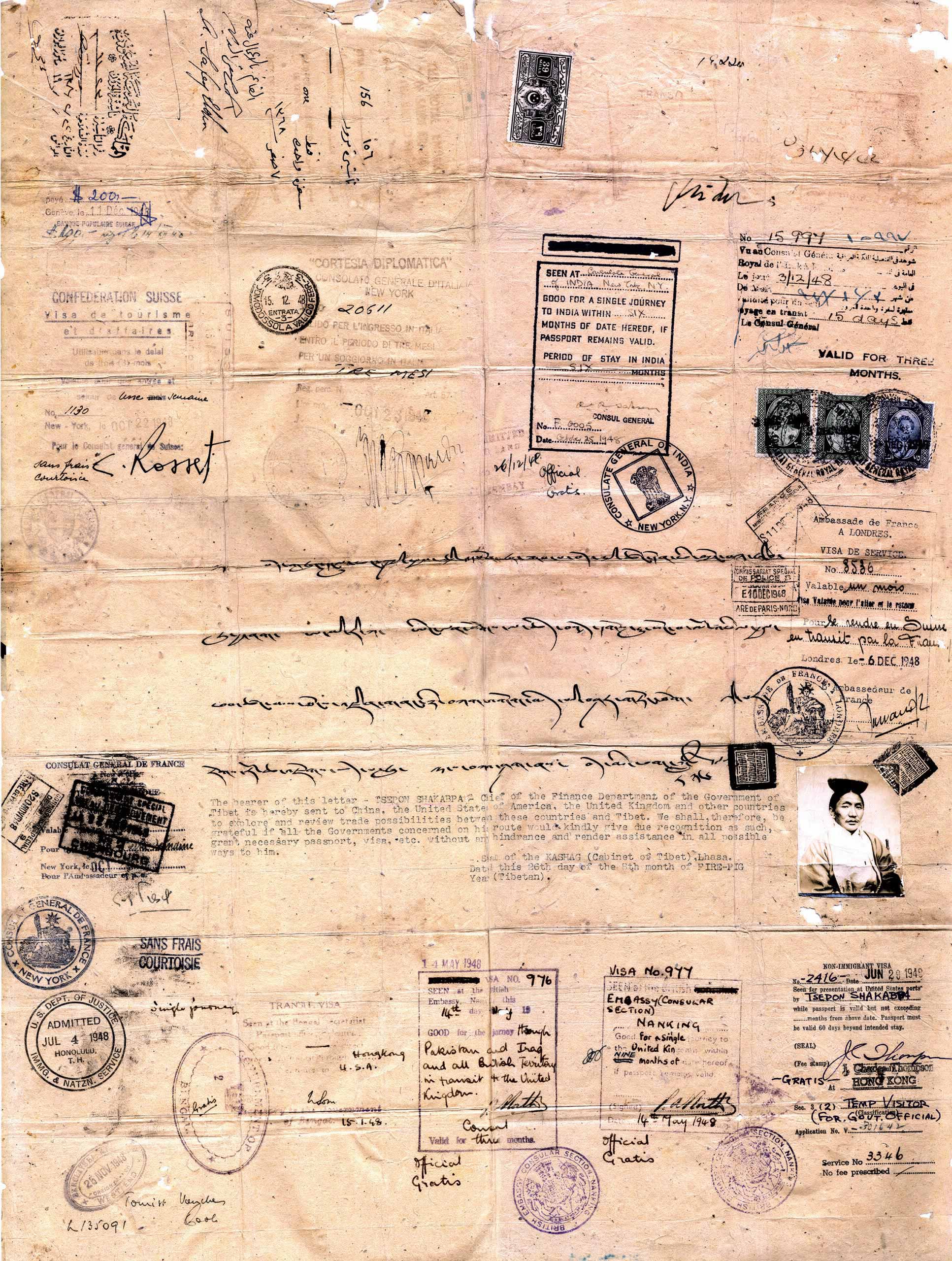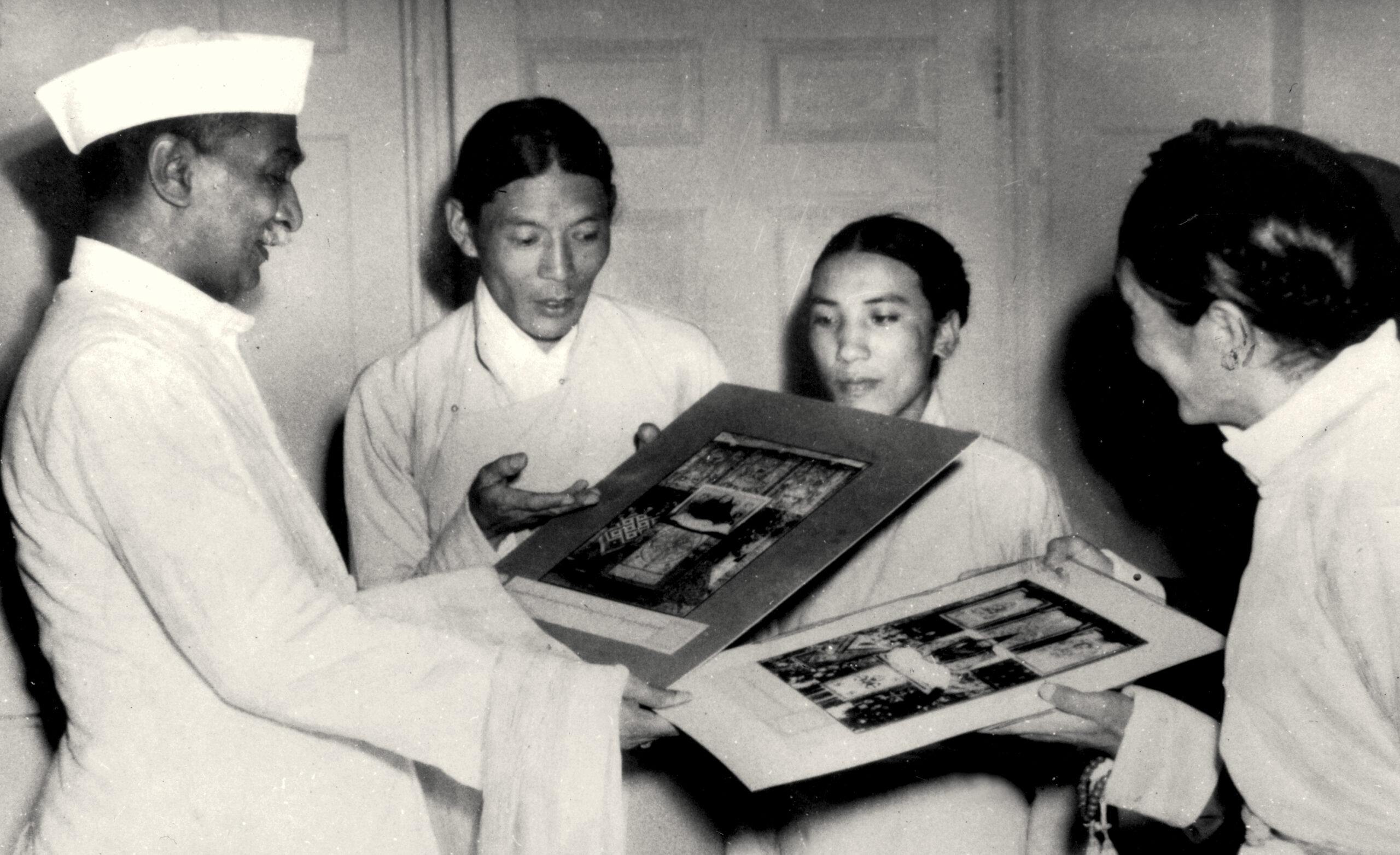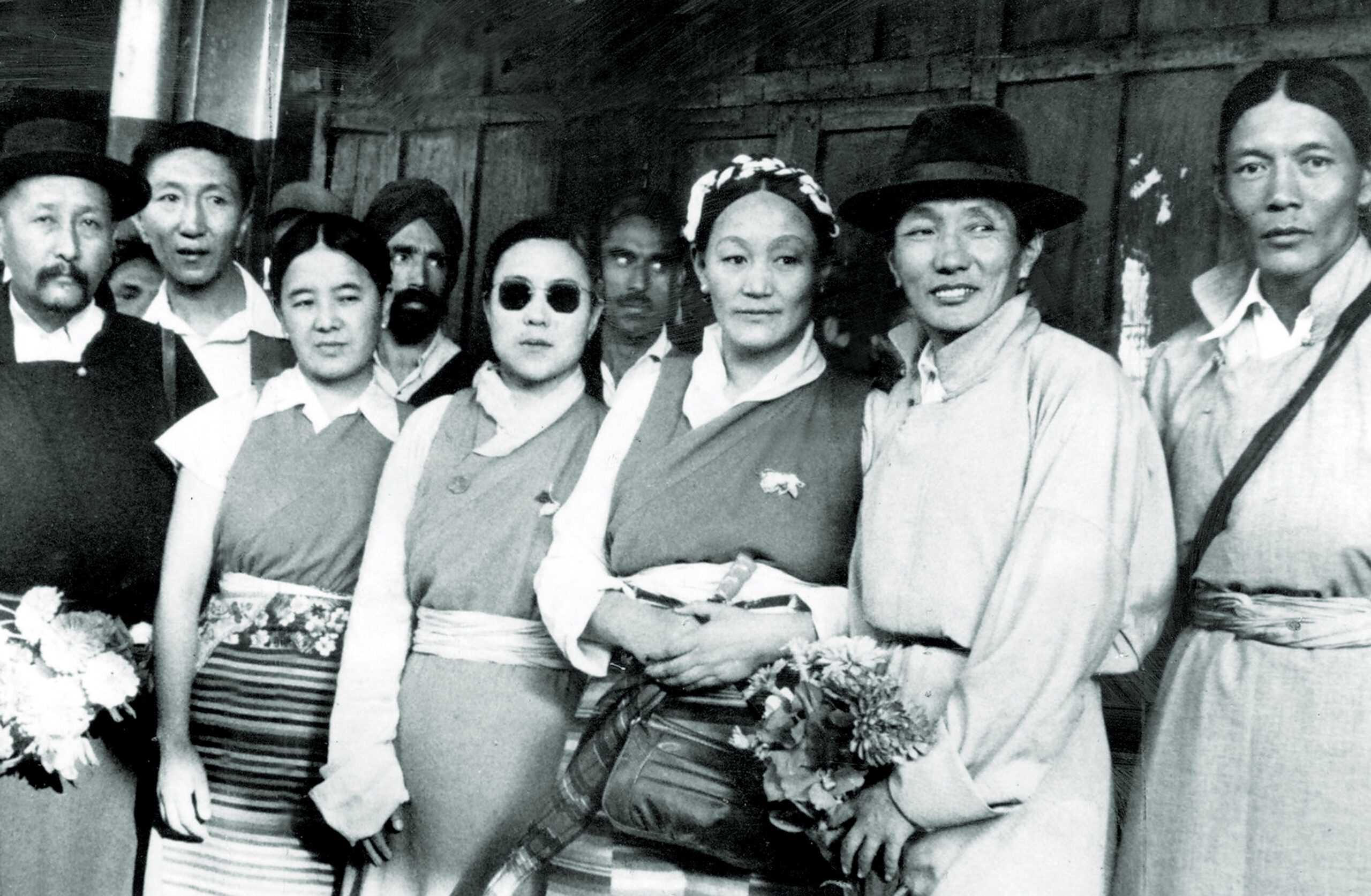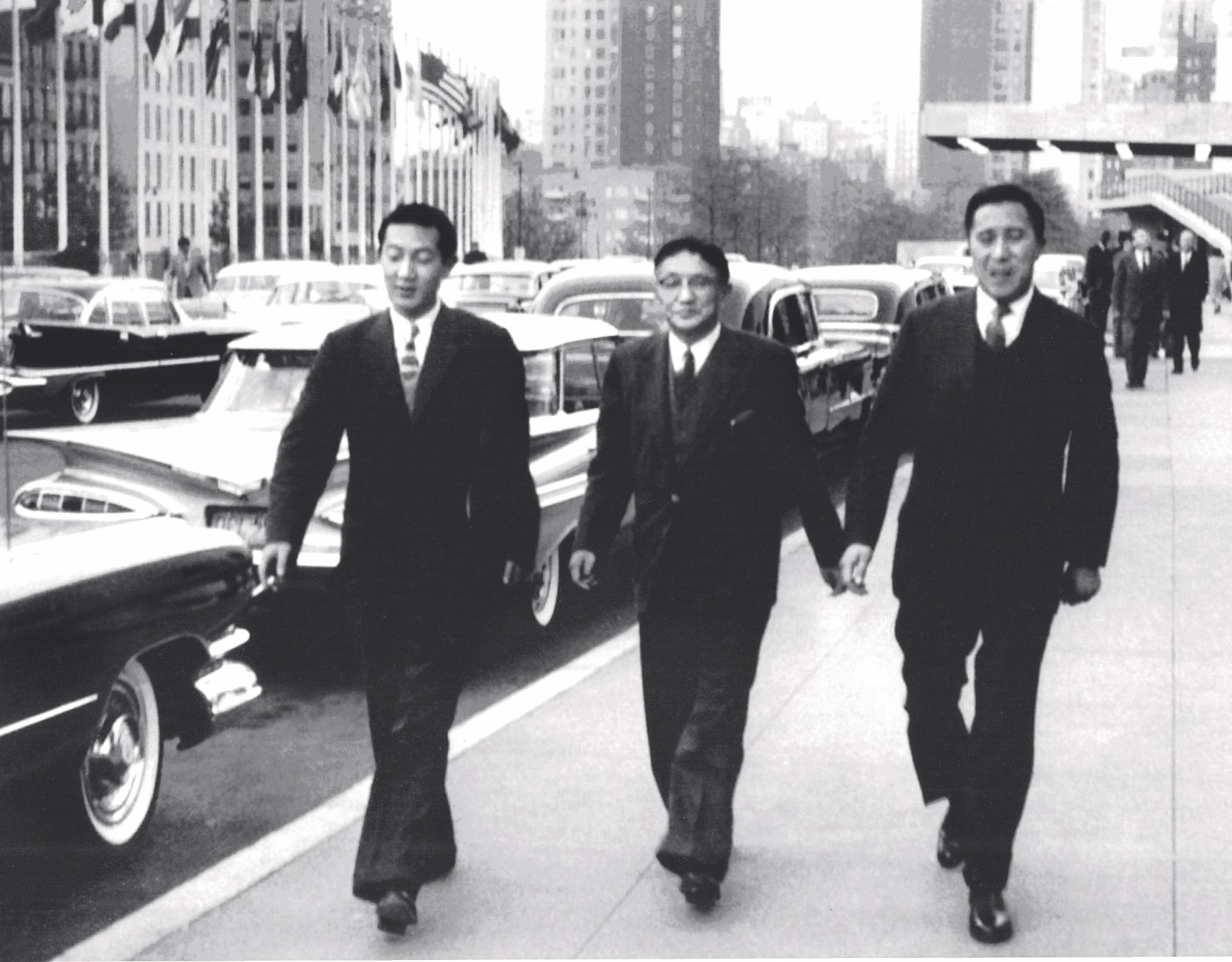
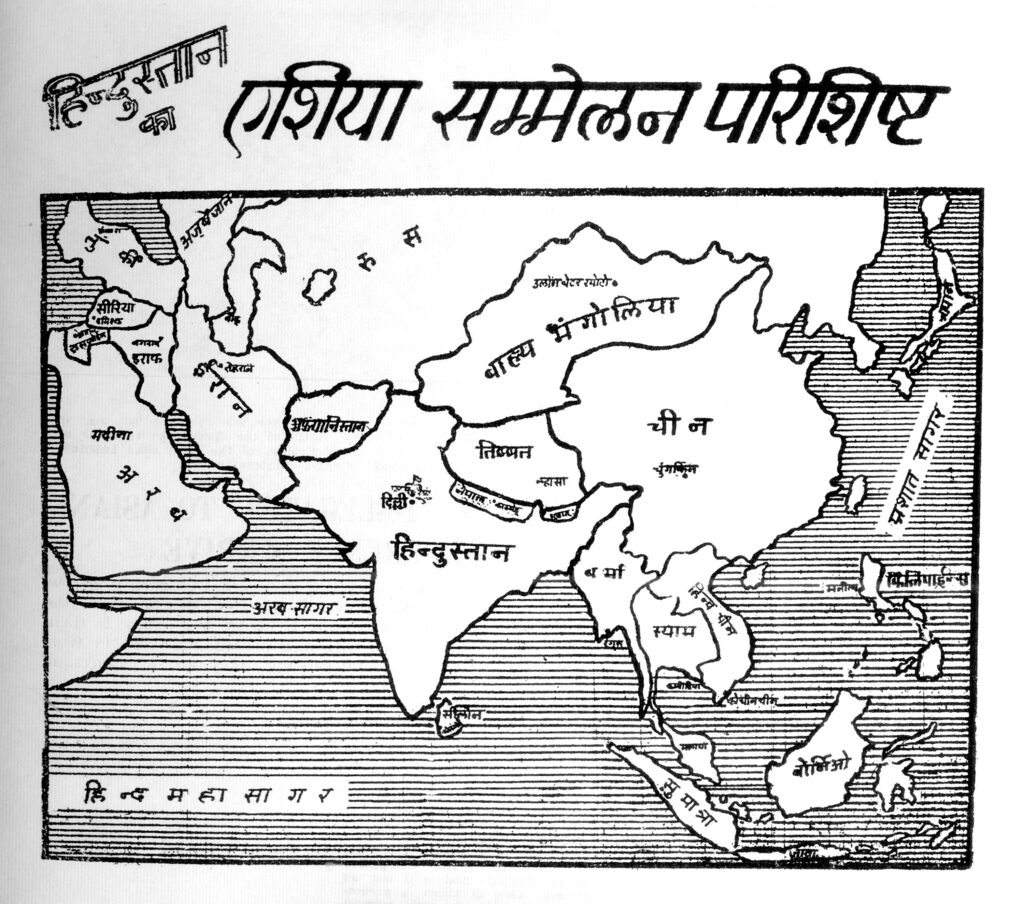
Reaching Out to the World
In the face of mounting threats from China, the Tibetan government undertook urgent diplomatic efforts to protect its sovereignty and assert its centuries-old independence on the global stage.
In 1947, a Tibetan delegation participated in the First Asian Relations Conference in New Delhi—marking a significant milestone in modern Tibetan diplomacy. Led by Teiji Tsewang Rigzin Sampho and Khenchung Lobsang Wangyal from the Tibetan Foreign Office, the delegation was seated with the Tibetan national flag prominently displayed on the rostrum. A map of Tibet as an independent nation was also featured at the venue, signaling Tibet’s distinct political identity to other Asian nations and the international community.
That same year, although His Holiness the 14th Dalai Lama had not yet assumed political office, his government took a historic step by sending a trade delegation abroad. Led by Finance Minister W.D. Shakabpa, the mission travelled in 1948 to India, China, the United Kingdom, and the United States, using passports issued by the Tibetan government in Lhasa. This mission marked a break from Tibet’s long-standing isolationist policies. A central goal was to assert Tibet’s independent status and counter China’s territorial claims.
Earlier, in 1946, the Tibetan government sent a goodwill delegation to the American Commissioner in New Delhi with gifts and a letter addressed to the President of the United States, congratulating the U.S. on its victory in the Second World War. Commissioner George R. Merrell formally received the message and gifts, reflecting Tibet’s efforts to engage with the international community.
Following China’s military invasion of eastern Tibet in 1950, the young Dalai Lama appealed to the United Nations for intervention. On 7 November 1950, El Salvador raised the Tibetan issue at the UN General Assembly, leading to discussions in subsequent sessions. On 18 November, the General Assembly condemned China’s invasion. In the years following his exile, His Holiness continued to call on the UN, resulting in three resolutions—adopted in 1959, 1961, and 1965—recognizing the Tibetan people’s suffering and affirming their right to self-determination.
